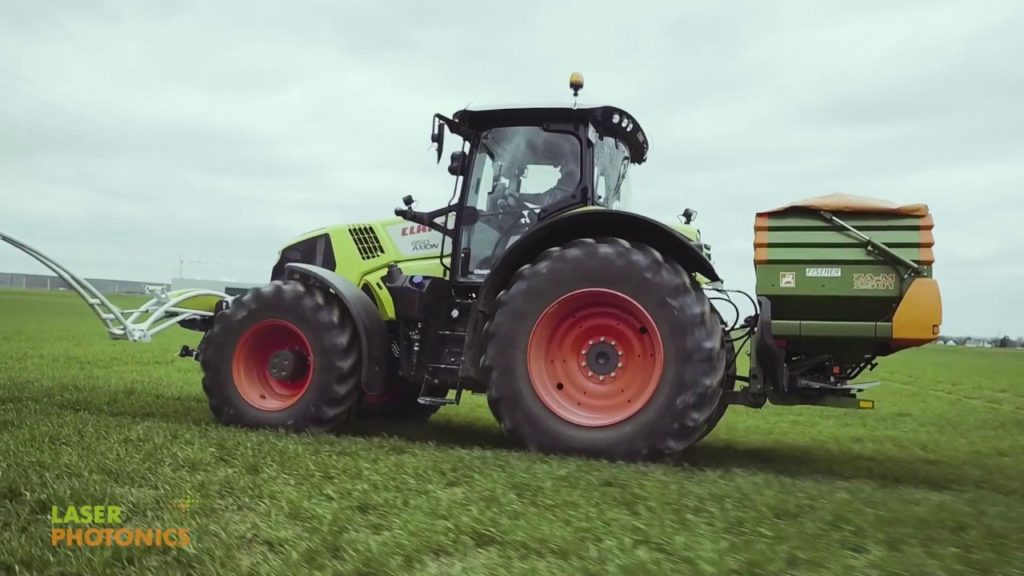
Photonics Technologies Become Integral Part of Farming
Photonics Technologies in Farming
Farmers everywhere face the same daunting task: the world population is growing at an exponential rate, and food supply has to keep up. There is practical limits to a farmer’s resources including land, water, and crops. It is essential to establish a process that produces the most harvest while saving the most time, energy, and money. “Future farming” techniques utilize photonics devices in multiple stages of agriculture to drive the most efficient farm possible. These technologies can be used on land and directly on crops to stimulate simpler mass production without sacrificing quality. Slowly, farmers around the world are turning to optics to run their farm from the ground up. Let’s see how photonics technologies help them achieve ultimate efficiency and output.
Laser Land Leveling
Many farms suffer from unevenly sloped fields – a discrepancy that creates ineffective water drainage over large areas. Laser land leveling utilizes a tower-mounted laser level to flatten land and ward off detrimental effects of improper drainage.
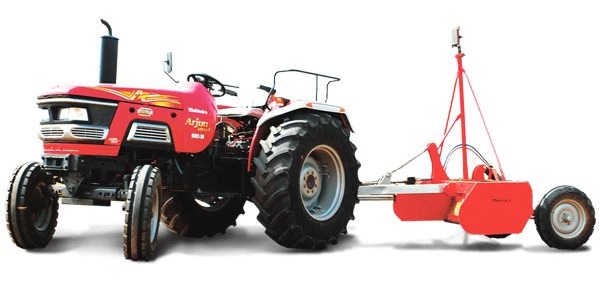
Laser Land Leveling System (Courtesy of Agroman)
The laser land leveling system consists of an emitter, receiver, extension arm, controller, and tractor scraper. A beam radiates from the emitter to form a leveling plate. This beam detects irregularities in the level of the land and the receiver sends the signal to adjust the arm and flatten the land with the tractor scraper as needed. This method saves water, land, fertilizer, and ultimately, money. Laser land leveling could save 30% water consumption when compared to manually flattened land.
Laser Triangulation for Crops Analysis
It is imperative that a farmer gather as much information about their crops as possible for optimal harvest and crop management. Crop parameters such as height, biomass density, and composition are important to consider when executing a grow and harvest.
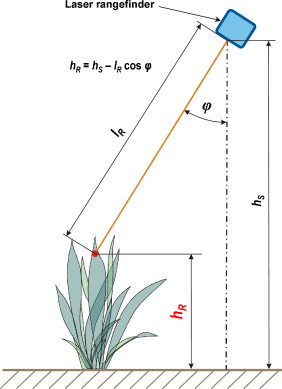
Laser triangulation methods help farmers characterize crops. Courtesy of ScienceDirect.
Laser triangulation techniques utilize beams and multiple sensors to gather this important data. This technique projects a laser onto the object of interest and receives the reflected light on a sensor. The device then uses basic geometry to determine distance measurements, and the system can then characterize the crop and relay the information to the user. Large areas of crop can be sensed by laser rangefinders in short periods of time for maximum efficiency. The USDA currently uses this technology to distinguish defects in crops.
Biospeckle Method
Farmers must ensure they are harvesting the highest-quality crop, though this is not always easy to determine by eye. Fruit, for example, requires careful attention and monitoring. Researchers in France and Lebanon have recently devised a nondestructive, fast device that incorporates what is known as the “biospeckle method” to evaluate fruits using light.
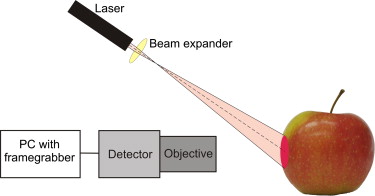
The “biospeckle method” is a relatively new but effective technique in determining the ripeness of many different kinds of fruit. Courtesy of ScienceDirect.
The biospeckle method evaluates the interference pattern formed when a biological sample is illuminated by laser light. When the light illuminates the surface, scattered light will exhibit form randomly distributed bright and dark spots called “speckle pattern.” CMOS and CCD cameras can then record the pattern as it interacts with a fruit’s outer cell layer. Speckle patterns change over time- and therefore with ripeness- so images of the pattern are ideal for characterizing the state of the fruit.
LED Growing Lights
Not all farms are outdoors. Many crops benefit from the advantage of better control over an indoor system. Interaction with light is vital to crops’ health, and this means ensuring they are subject to the correct intensity, wavelength, and duration of light.
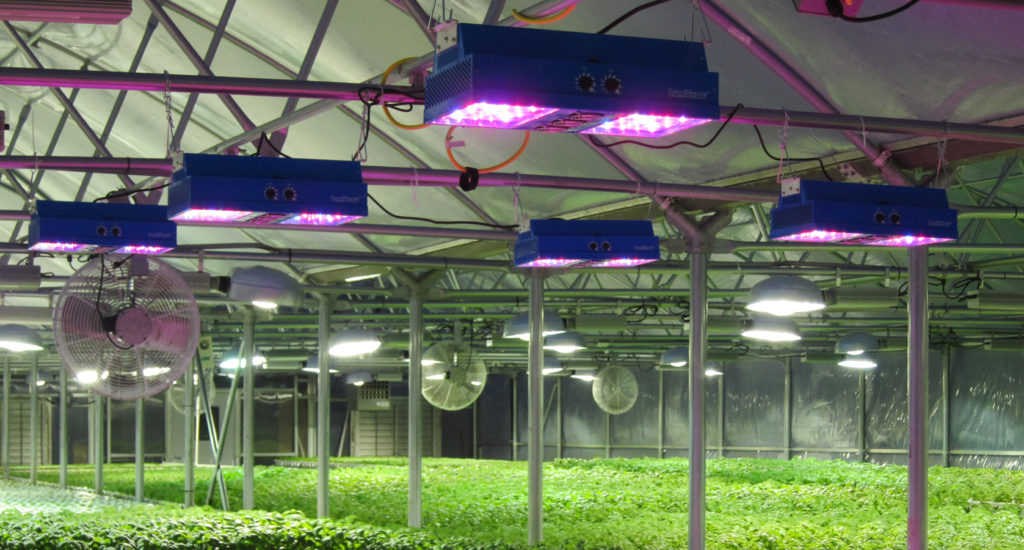
LEDs provide an excellent alternative when the days are too short or too cold. Courtesy of Lux Review.
Artificial light such as LEDs have shown to be especially effective in supporting plants’ growth. Many plants best absorb light in the visible range because these absorptions are beneficial to photosynthesis. LEDs also consume minimal electricity and are available in variety of wavelengths so that farmers can customize their light output to their crop. LED growing lights ultimately produce high energy savings and maximum control.
These are just a few example how photonics technologies make powerful impact in the most vital areas of human civilization.
